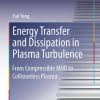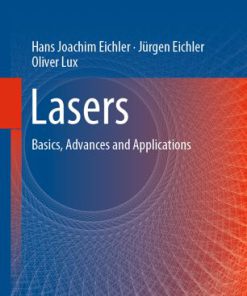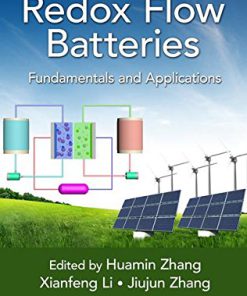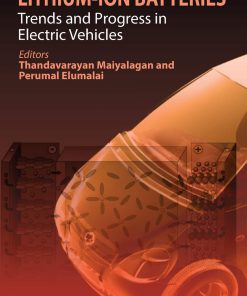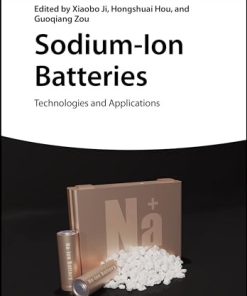Zinc Batteries Basics Development and Applications 1st Edition by Rajender Boddula ISBN 1119661897 9781119661894
$50.00 Original price was: $50.00.$25.00Current price is: $25.00.
Zinc Batteries Basics Development and Applications 1st Edition by Rajender Boddula – Ebook PDF Instant Download/Delivery: 1119661897, 978-1119661894
Full dowload Zinc Batteries Basics Development and Applications 1st Edition after payment
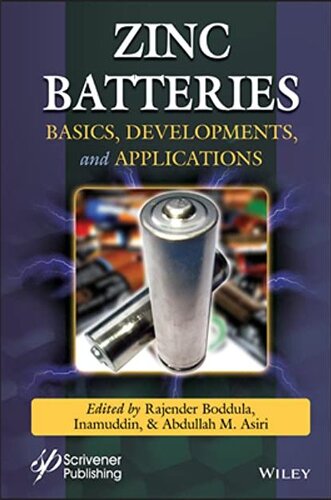
Product details:
ISBN 10: 1119661897
ISBN 13: 978-1119661894
Author: Rajender Boddula
Battery technology is constantly changing, and the concepts and applications of these changes are rapidly becoming increasingly more important as more and more industries and individuals continue to make “greener” choices in their energy sources. As global dependence on fossil fuels slowly wanes, there is a heavier and heavier importance placed on cleaner power sources and methods for storing and transporting that power. Battery technology is a huge part of this global energy revolution.
Zinc batteries are an advantageous choice over lithium-based batteries, which have dominated the market for years in multiple areas, most specifically in electric vehicles and other battery-powered devices. Zinc is the fourth most abundant metal in the world, which is influential in its lower cost, making it a very attractive material for use in batteries. Zinc-based batteries have been around since the 1930s, but only now are they taking center stage in the energy, automotive, and other industries.
Zinc Batteries: Basics, Developments, and Applicationsis intended as a discussion of the different zinc batteries for energy storage applications. It also provides an in-depth description of various energy storage materials for Zinc (Zn) batteries. This book is an invaluable reference guide for electrochemists, chemical engineers, students, faculty, and R&D professionals in energy storage science, material science, and renewable energy.
Zinc Batteries Basics Development and Applications 1st Table of contents:
1. Carbon Nanomaterials for Zn-Ion Batteries
-
1.1 Introduction
-
1.2 Co4N (CN) – Carbon Fibers Network (CFN) – Carbon Cloth (CC)
-
1.3 N-Doping of Carbon Nanofibers
-
1.4 NiCo2S4 on Nitrogen-Doped Carbon Nanotubes
-
1.5 3D Phosphorous and Sulfur Co-Doped C3N4 Sponge with C Nanocrystal
-
1.6 2D Carbon Nanosheets
-
1.7 N-Doped Graphene Oxide with NiCo2O4
-
1.8 Conclusions
-
Acknowledgements
-
References
2. Construction, Working, and Applications of Different Zn-Based Batteries
-
2.1 Introduction
-
2.2 History
-
2.3 Types of Batteries
-
2.3.1 Primary Battery
-
2.3.2 Secondary Battery
-
-
2.4 Zinc-Carbon Batteries
-
2.5 Zinc-Cerium Batteries
-
2.6 Zinc-Bromine Flow Batteries
-
References
3. Nickel and Cobalt Materials for Zn Batteries
-
3.1 Introduction
-
3.2 Zinc Batteries
-
3.3 Nickel-Zinc Battery
-
3.3.1 History
-
3.3.2 Basics
-
3.3.3 Materials and Cost
-
3.3.4 Reliability
-
3.3.5 Voltage Drop
-
3.3.6 Performance
-
-
3.4 Advantages
-
3.5 Challenges
-
3.6 Effect of Metallic Additives, Cobalt and Zinc, on Nickel Electrode
-
3.7 Conclusion
-
References
4. Manganese-Based Materials for Zn Batteries
-
4.1 Introduction
-
4.2 History of the Zinc and Zinc Batteries
-
4.3 Characteristics of Batteries
-
4.3.1 Capacity
-
4.3.2 Current
-
4.3.3 Power Density
-
-
4.4 Mn-Based Zn Batteries
-
4.5 Conclusion
-
References
5. Electrolytes for Zn-Ion Batteries
-
5.1 Introduction
-
5.2 Electrolytes for Rechargeable Zinc Ion Batteries (RZIBs)
-
5.2.1 Aqueous Electrolytes (AqEs)
-
5.2.1.1 Pros and Cons of AEs
-
5.2.1.2 Neutral or Mildly Acidic Electrolytes
-
-
5.2.2 Non-Aqueous Electrolytes
-
5.2.2.1 Solid Polymer Electrolytes
-
5.2.2.2 Hydrogel or Gel Electrolytes
-
5.2.2.3 Gel Polymer Electrolytes
-
-
5.2.3 Ionic Liquid Electrolytes
-
5.2.4 Bio-Electrolyte
-
-
5.3 Summary
-
Abbreviation Table
-
Acknowledgements
-
References
6. Anode Materials for Zinc-Ion Batteries
-
6.1 Introduction
-
6.2 Storage Mechanism
-
6.3 Zinc-Ion Battery Anodes
-
6.4 Future Prospects
-
6.5 Conclusion
-
References
7. Cathode Materials for Zinc-Air Batteries
-
7.1 Introduction
-
7.1.1 Cathode Definition
-
-
7.2 Zinc Cathode Structure
-
7.3 Non-Valuable Materials for Cathode Electrocatalytic
-
7.4 Electrochemical Specifications of Activated Carbon as a Cathode
-
7.4.1 Electrochemical Evaluation of Cathode Substances La1−XCaxCoO3 Zinc Batteries
-
-
7.5 Extremely Durable and Inexpensive Cathode Air Catalyst
-
7.5.1 Co3O4/MnO2 NPs Dual Oxygen Catalyst as Cathode for Zn-Air Rechargeable Battery
-
7.5.2 Carbon Nanotubes (CNT) Employing Nitrogen as Catalyst in the Zinc/Air Battery System
-
7.5.3 Magnesium Oxide NPs Modified Catalyst for the Use of Air Electrodes in Zn/Air Batteries
-
7.5.4 Silver-Magnesium Oxide Nanocatalysts as Cathode for Zn-Air Batteries
-
7.5.5 One-Step Preparation of C-N Ni/Co-Doped Nanotube Hybrid as Outstanding Cathode Catalysts for Zinc-Air Batteries
-
-
7.6 Hierarchical Co3O4 Nano-Micro Array with Superior Working Characteristics Using Cathode Ray on Pliable and Rechargeable Battery
-
7.7 Dual Function Oxygen Catalyst Upon Active Iron-Based Zn-Air Rechargeable Batteries
-
7.7.1 Co4N and NC Fiber Coupling Connected to a Free-Acting Binary Cathode for Strong, Efficient, and Pliable Air Batteries
-
-
7.8 Conclusion
-
Nomenclature
-
References
8. Anode Materials for Zinc-Air Batteries
-
8.1 Introduction
-
8.2 Zinc Anodes
-
8.2.1 Downsizing of Zn Anodes
-
8.2.2 Design of Membrane Separators
-
8.2.3 The Use of ZnO Instead of Zn
-
8.2.4 Increase of Surface Area in Zn Anode Structure
-
8.2.5 Coating of Zn Anode
-
8.2.5.1 Bismuth Oxide-Based Glasses
-
8.2.5.2 Silica
-
8.2.5.3 Carbon Nanotubes
-
8.2.5.4 ZnO@C
-
8.2.5.5 Zn-Al LDHs
-
8.2.5.6 ZnO@C-ZnAl LDHs
-
8.2.5.7 Tapioca
-
8.2.5.8 TiO2
-
-
-
8.3 Conclusions
-
References
9. Safety and Environmental Impacts of Zn Batteries
-
9.1 Introduction
-
9.2 Working Principle of Zinc-Based Batteries
-
9.2.1 Zinc-Air Batteries Basic Principle and Advances
-
9.2.2 Zinc Organic Polymer Batteries
-
9.2.3 Zinc-Ion Batteries
-
9.2.3.1 Zinc-Silver Batteries
-
9.2.3.2 Zinc-Nickel Batteries
-
9.2.3.3 Zinc-Manganese Battery
-
-
-
9.3 Batteries: Environmental Impact, Solution, and Safety
-
9.3.1 Disposal of Batteries and Environmental Impact
-
9.3.2 Recycling of Zinc-Based Batteries
-
-
9.4 Conclusion
-
Acknowledgement
-
References
10. Basics and Developments of Zinc-Air Batteries
-
10.1 Introduction
-
10.1.1 Public Specifications
-
-
10.2 Zinc-Air Electrode Chemical Reaction
-
10.3 Zinc/Air Battery Construction
-
10.4 Primary Zn/Air Batteries
-
10.5 Principles of Configuration and Operation
-
10.6 Developments in Electrical Fuel Zn/Air Batteries
-
10.6.1 Zn/Air Versus Metal/Air Systems
-
-
10.7 Conclusion
-
References
11. History and Development of Zinc Batteries
-
11.1 Introduction
-
11.2 Basic Concept
-
11.2.1 Components of Batteries
-
11.2.2 Classification of Batteries
-
11.2.2.1 Primary Batteries
-
11.2.2.2 Secondary or Rechargeable Batteries (RBs)
-
-
-
11.3 Cell Operation
-
11.3.1 Process of Discharge
-
11.3.2 Process of Charge
-
-
11.4 History
-
11.5 Different Types of Zinc Batteries
-
11.5.1 Zinc-Carbon Primary Batteries
-
11.5.2 Zinc-Nickel Batteries
-
11.5.3 Zinc-Cobalt Batteries
-
11.5.4 Zinc-Lead Batteries
-
11.5.5 Zinc-Manganese Batteries
-
-
11.6 Conclusion
People also search for Zinc Batteries Basics Development and Applications 1st:
a rechargeable zinc-air battery based on zinc peroxide chemistry
what are zinc batteries used for
difference between zinc batteries and alkaline
what does zinc do in a battery
You may also like…
Science (General)
Science (General) Biology and other natural sciences - Ecology
Science (General)
Engineering - Energy & Power Resources


